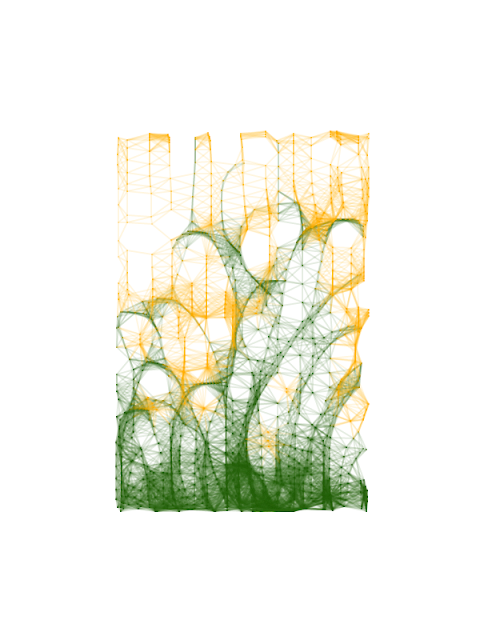I finally saw Rashomon directed by Akiro Kurosawa, yesterday. I had heard so much about the film that the situation had come to an extent where i had the film with me and hadnt watched it for the longest of times. (there are hundreds of such films which i havent watched although i have them - all my kind of films, yet....perhaps it's the ease of the medium. Films communicate too easily and leaves very little room for imagination. It fills in rooms for image, music and text. A lot is already fed to the viewer. I like to struggle with a subject to form a conception.)
Rashomon seemed to be a dilapidated, vandalized, haunted Japanese gateway. It already revealed the brilliance of the director - a half broken gateway allowing itself to be fragmented, burnt and still 'used'. Standing erect in heavy rain, it provided shelter as well as ruined itself. What else could a building in this stage of its life do? In getting ruined, it told multiple stories of its situation.
The structure of the film was very much like 'Rashomon' - where either one tore it apart or imagined the wholeness of it. Both seemed impossible. While each character of the story tried to construct the reality of the film, the viewer is still left to wonder if here was a reality. I am reminded of Nietzche's comment on truth - "Truth is like a woman". Of course that is a very sexist statement. But the question he raises about th truthfulness of truth is something that could take form through a work like Rashomon.
Which reality do we believe and why should we believe any reality? We construct our own imaginations, amongst which, our life is one. Often suggesting sharp moral and ethical dilemmas of human nature in trying situations, rashomon constantly urges you to think , rethink your position. It invites you to make a judgement and yet stops you from arriving at a conclusion.
In the reality of life, we end up making conclusions. Our life is a construct of conclusions we make. History evaluates and reopens these conclusions taking us back into the acts. History presents to us the framework of events, like the semi built / semi dilapidated structure of rashomon, further complexified by the meaning and connotations given to it by the society. We are to make sense of it - a real one for iur real life. We have to either complete it or rip it apart piece by piece to be burnt in time.
Rashomon seemed to be a dilapidated, vandalized, haunted Japanese gateway. It already revealed the brilliance of the director - a half broken gateway allowing itself to be fragmented, burnt and still 'used'. Standing erect in heavy rain, it provided shelter as well as ruined itself. What else could a building in this stage of its life do? In getting ruined, it told multiple stories of its situation.
The structure of the film was very much like 'Rashomon' - where either one tore it apart or imagined the wholeness of it. Both seemed impossible. While each character of the story tried to construct the reality of the film, the viewer is still left to wonder if here was a reality. I am reminded of Nietzche's comment on truth - "Truth is like a woman". Of course that is a very sexist statement. But the question he raises about th truthfulness of truth is something that could take form through a work like Rashomon.
Which reality do we believe and why should we believe any reality? We construct our own imaginations, amongst which, our life is one. Often suggesting sharp moral and ethical dilemmas of human nature in trying situations, rashomon constantly urges you to think , rethink your position. It invites you to make a judgement and yet stops you from arriving at a conclusion.
In the reality of life, we end up making conclusions. Our life is a construct of conclusions we make. History evaluates and reopens these conclusions taking us back into the acts. History presents to us the framework of events, like the semi built / semi dilapidated structure of rashomon, further complexified by the meaning and connotations given to it by the society. We are to make sense of it - a real one for iur real life. We have to either complete it or rip it apart piece by piece to be burnt in time.






















